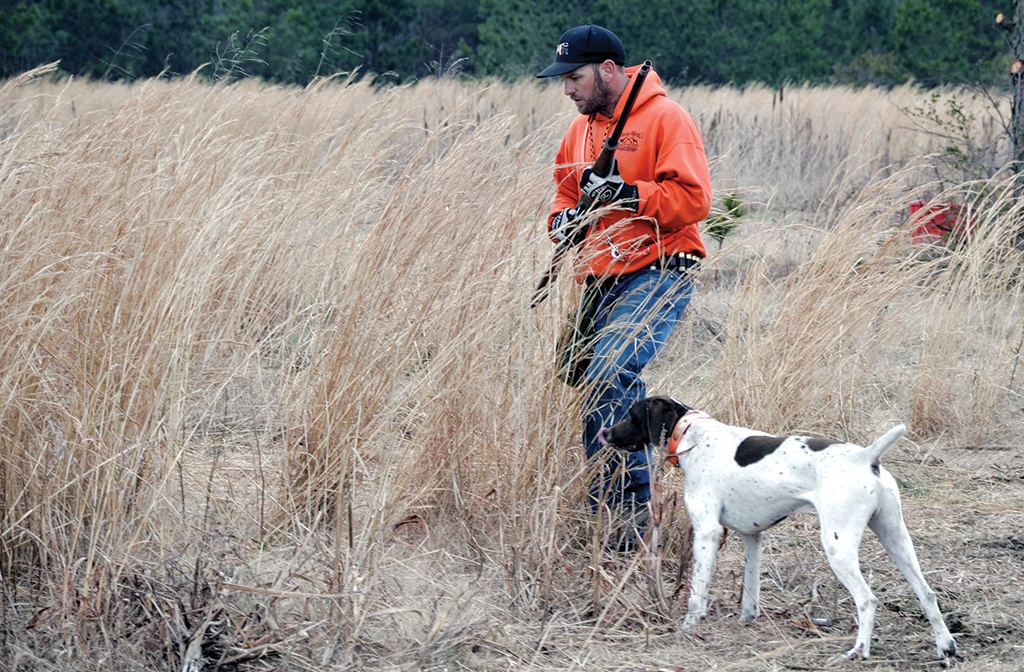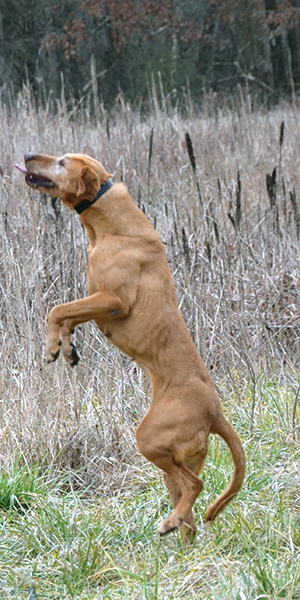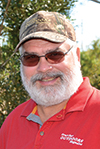
Alabama hosts ‘Super Bowl’ for bird dogs and handlers
The small northeastern Alabama town of Section, population 800, nearly doubled in size as the best bird dogs in the nation and their handlers competed in the National Field Trials, held Feb. 13-20 on the Northeast Alabama Hunting Preserve.
Dubbed the “Super Bowl of bird dog handling,” the National Field Trials pitted nearly 600 dogs and their handlers in events simulating bird hunting. Each team needed to find three birds in a designated field measuring about 10 to 12 acres in less than 15 minutes. Each time the shooter missed a bird, the judge deducted points.

“We designed the events to simulate actual hunting as much as possible,” says Frank Arnau, former president of the ruling United Field Trialer’s Association. “The dog and handler must work as a team. The dog has to find and point the bird. The person has to shoot it.”
Teams competed in such categories as flushing or pointing. Each team competes twice in an event. Judges total the times and scores for each run.
“Scoring is based upon how the competitors and their dogs perform, not on a judge’s opinion,” says Clay Moose, UFTA president and a three-time national champion dog handler. “Pointing dogs have to maintain a point for three seconds before they can act on the bird. In the flushing division, the dog makes the bird fly, the handler harvests it and then gets the retrieve.”
Before each scoring “run,” event staffers released three pen-raised bobwhite quail into a field marked off with boundary flags. To keep everything honest, competitors sat in windowless sheds until the bird handler left the field. Then, the human-dog team waited for the signal to begin. As they began, the judge followed the action on an all-terrain vehicle, staying safely out of the way while scoring the run.
For the first run of the day, the bird handler released four quail instead of three. Throughout the day, some birds fly or run out of bounds. A few birds elude the dogs. Competitors sometimes miss birds. Therefore, a field may contain more than three quail at any given time.
“A good run is anything between four and seven minutes,” Moose says. “The best pointing dog had a total time of six minutes and 47 seconds after two runs.
Moose hopes to encourage more interest in the sport, especially among young people and women.
“It’s a great sport and we need to get some more youths involved. We want to encourage people to come out to our events to observe and get involved. This year, 36 women and 20 youths competed in events.”
For the competition, event staffers released about 6,500 birds. Jeff Ferguson, owner of the Northeast Alabama Hunting Preserve, released another 3,500 so competitors could practice before the competition began. Some birds survived. People spotted a few quail walking through underbrush bordering the competition fields the day after the event ended. The rest went to good causes.
“We donated the birds that the competitors shot to several charities,” Ferguson says. “Some of them held wild game dinners as fundraisers. We also gave a lot of birds to any local people who wanted to eat them.”
Competitors came from across the country
To earn a place at the Nationals, every dog and competitor needed to qualify through a series of events held throughout the year. At each event, teams accumulated points based upon how well they and their dog did. The UFTA totals the highest points of the best 10 events for each person to determine the yearly points champion.
The AFTA held the Nationals in Alabama for nine years in a row, the last two at the Northeast Alabama Hunting Preserve. Before that, they spent seven years at the Doublehead Resort in Town Creek.
“It’s a great honor for our preserve to be picked for the second year in a row,” Ferguson says. “We have a great facility here to put on such an event. The fields are close. We have lodging and a great conference center where people can gather. I really appreciate the help we received from Snead Agricultural Equipment in Fort Payne and Boykin Tractor in Rainsville. Sand Mountain Electric Cooperative also provided a lot of support for two years straight. I especially want to thank Mayor Nick Jones of Rainsville for all his support during the last two years.”
At the 2016 event, people came from all across the nation to compete. Some came from as far away as Colorado, Minnesota and Canada. Although the actual trials lasted one week, many people stayed for two weeks. Many came early to acclimate themselves and their dogs to Alabama weather and get in some practice.
“Jeff has been phenomenal in accommodating us,” Moose said. “We love it down here. The people are great. Everyone here welcomed us. Many local people came out to watch the competition.”
When such a large group visits a small town like Section, they make a considerable economic impact. Although some visitors brought their own recreational vehicles for sleeping, others needed lodging. They all needed fuel, supplies and food for themselves and their animals. Many whole families came.
“It’s a lot of extra work to keep the fields in shape and hold such an event, but it was all worth it,” Ferguson said.
For more information on the UFTA, see ufta-online.com. For more information on the Northeast Alabama Hunting Preserve, call Ferguson at 256-638-7014 or see northeastalhuntingpreserve.com.

 John N. Felsher is a freelance writer and photographer who writes from Semmes, Ala. Contact him through his website at www.JohnNFelsher.com
John N. Felsher is a freelance writer and photographer who writes from Semmes, Ala. Contact him through his website at www.JohnNFelsher.com




